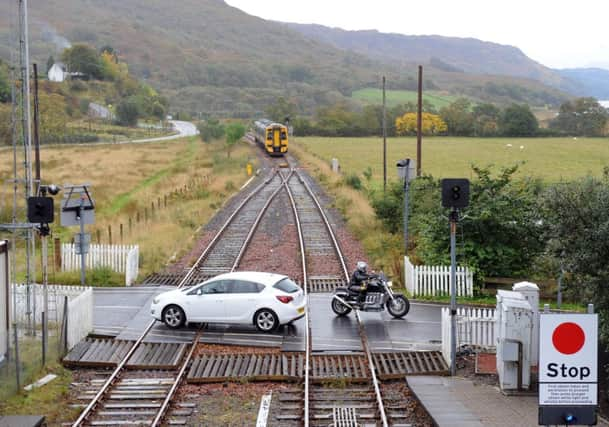Ramblers’ plea to use Scotland’s level crossings


Statutory rights of access were secured in a 2005 bill, and Ramblers Scotland convener David Thomson claims it is now time the Scottish Parliament resolves confusion over the public’s right to use level crossings on Scotland’s railway lines.
FOLLOW US
SCOTSMAN TABLET AND MOBILE APPS
But Network Rail has responded by saying level crossings are the biggest risk on the railway and they are concentrating on closing as many as possible, rather than entering into discussions over rights of access.
Advertisement
Hide AdAdvertisement
Hide AdMr Thomson said: “Today, Scotland can rightly celebrate ten years of world-class access legislation, and there is widespread acceptance that the right to roam is working well.
“But there is one outstanding issue in the lack of clarity over public rights to cross railway lines, which affects 70 per cent of Scotland’s 600 level crossings. In Network Rail’s view, any member of the public using the crossing is committing criminal trespass. We believe the current Scottish Government consultation on land reform is an ideal opportunity to resolve this.”
There are public rights of access across around 150 of Scotland’s level crossings. However, the remainder are so-called private crossings. Until 2004, access by non-motorised users over these crossings was tolerated by Railtrack and its predecessors.
Mr Thomson, whose organisation has 6,500 members, added: “Since then, despite no legislative change having taken place, Network Rail has insisted that anyone who is not the specified authorised user would be committing criminal trespass by using any such level crossing.
“These crossings are used by walkers, cyclists and horseriders, with thousands reliant upon these as important routes in some locations. In some cases, the crossings pre-date the construction of the railway as they were existing established paths.
“In rural areas, the nearest point people can cross could be many miles away and therefore these private crossings have immense importance both to local communities and also to those enjoying outdoor recreation.”
Mr Thomson believes the position taken by Network Rail is based on a misunderstanding of access in Scotland, and instead is based on their perception of England and Wales’ rights of way legislation.
Mr Thomson added: “Network Rail has proved to be very uncooperative in resolving this issue over the past decade.
Advertisement
Hide AdAdvertisement
Hide Ad“The current Scottish Government consultation on land reform is an opportunity for the Scottish Parliament to resolve this by amending the Land Reform (Scotland) Act 2003, to specify that statutory rights of public access apply across all private level crossings where there is a right of access to land on either side of the railway.”
A Network Rail spokesman said: “The incorrect use of level crossings is one of the main risks to rail safety and a leading cause of fatal accidents on the railway. Network Rail is committed to closing crossings where we can and we do not build new crossings into the railway. Our aim is to steadily reduce level-crossing use rather than increase it.”
A Scottish Government spokeswoman said: “Our vision for land reform is a strong relationship between the people of Scotland and the land of Scotland. We are committed to a system of land rights that promotes fairness, social justice and environmental sustainability.”